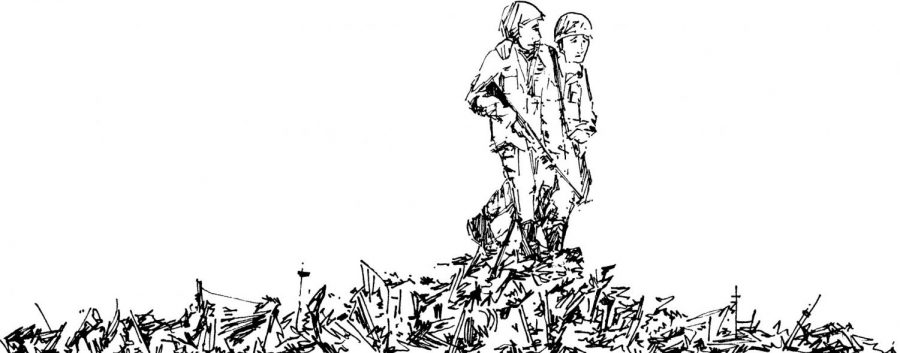Gary Shteyngart
“Super Sad True Love Story: A Novel”
Random House, 2010
In the not-too-distant future–as nearly all dystopian fiction is set in the “not-too-distant-future”–America is falling apart. The only stable currency is Chinese-yuan-pegged-dollars, books are considered “bound and printed media artifacts” and everyone communicates through their äppäräti–a type of futuristic smartphone that practically controls its owner’s life. Lenny Abramov is an anomaly in this world–an unattractive aging man who would rather read “bound and printed media artifacts” than stream them, who would rather go to the park than shop for appallingly revealing clothing.
On the last day of a wasted year in Rome, Lenny Abramov meets the beautiful yet damaged Eunice Park, a 22-year-old Korean-American girl from an abusive home. Lenny falls madly in love with her before being forced to return home, to the possible loss of his job in Post-Human Services–a department of the Staatling-Wapachung Corporation specializing in immortality–and to the crumbling infrastructure of his America, where everything is privatized and no one is safe.
Shteyngart’s novel is a story of love and loss, of the trials of mortality and of the dangers already facing the United States. More interesting than Lenny’s embarrassing love story are the events occurring almost in the background–nearly every state service is becoming privatized, from the MTA to the National Guard; people are separated into two categories: Low Net Worth Individuals and High Net Worth Individuals (LNWI and HNWI); the U.S. economy is in the tank and the only currency with any value is the Chinese yuan. Furthermore, everything seems to have become a conglomerate, from the rather prosaic UnitedContinentalDeltamerican Airlines to the hilarious LandOLakesGMFordCredit.
The problems facing contemporary America are taken to their ridiculous, if moderately logical, extreme. It’s of no surprise, then, when the government topples, armed mercenaries owned by the Staatling-Wapachung Corporation take over the streets. Of course, although this crisis takes precedence for a few chapters, Lenny and Eunice’s love story is still going on in the foreground, so it fades into the background yet again.
Most of the humor in this enjoyable novel relies on context and buildup–especially the eternally misspelled signs or the LOLspeak-filtered conversations that reflect the growing illiteracy of society. Books are “streamed” rather than read; at one point Eunice tells Lenny that she finds reading difficult because she “never really learned how to read texts . . . just to scan them for info.” Eunice’s generation, eternally plugged into their äppäräti, are completely unable to communicate without them.
This leads to one of the biggest disappointments of the novel. In a story all about technology, and the pitfalls of the digital age, the novel’s presentation in the form of a “printed media artifact” means it sounds more like the “New York Times” eternal kvetching about the downfall of Western Civilization at the hands of generation Me than it does like a nuanced analysis. It might have been more successful to present the story in a barrage of multimedia, words and images, form following content.
A personal note: I read the novel as an eBook to try and find some analogy between the äppäräti within the novel and our nascent forms. Unfortunately, this only gave me a headache. I am apparently much too fond of my own printed media artifacts, even if they do “smell like wet socks.”







